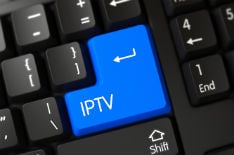Operation ‘IPTV Special’: 49 Pirate IPTV Resellers Fined €10,000 Each
Known in Italy as ‘pezzotto’, piracy-configured set-top devices have been blamed for mainstream rightsholders losing massive amounts of revenue, much of it connected to cheap subscriptions to unlicensed IPTV providers. In response to the growing threat, Italian authorities have been cracking down on all players in the ecosystem, from key suppliers right down to the humble consumer. These chains of events often begin with a raid...
YouTube Processes 4 Million Content ID Claims Per Day, Transparency Report Reveals
Earlier this year we reported that Google had processed the five billionth DMCA takedown request for its search engine, a massive number. Google search has reported these numbers for nearly a decade. However, the volume of copyright claims sent to its sister site YouTube has remained a mystery. Until now. Yesterday, YouTube released its first-ever copyright transparency report which provides an in-depth overview of how many...
Gary Bowser Agrees to Pay $10 Million in Piracy Damages to Nintendo
Hacking group Team-Xecuter was a thorn in the side of major gaming companies for a long time. The group offered hardware and software solutions that allowed people to install and play unofficial games and pirated copies on various consoles, including the popular Nintendo Switch. Team-Xecuter defended its work by pointing out that their products are not necessarily pirate tools. They supported the ‘right to repair’ movement and backed...
Open source photo processing with Darktable
It’s hard to say how good photographs happen. You have to be in the right place at just the right moment. You have to have a camera at the ready and an eye for composition. And that’s just the part that happens in the camera. There’s a whole other stage to great photography that many people don’t think about. It used to happen with lights and chemicals in a darkroom, but with today’s digital tools,...
Vanilla Vim is fun
When you start Vim with the --clean option, it shows up in “vanilla” mode. No plugins, no configuration, just back to the roots. I have collected a ton of configuration statements over the years, some of them dating from MS-DOS or Windows 3.1. Here is the deal: I will start from scratch to find a good starting-point configuration with just the plugins available in Fedora 35. Will I survive a week of coding? I’ll find...





